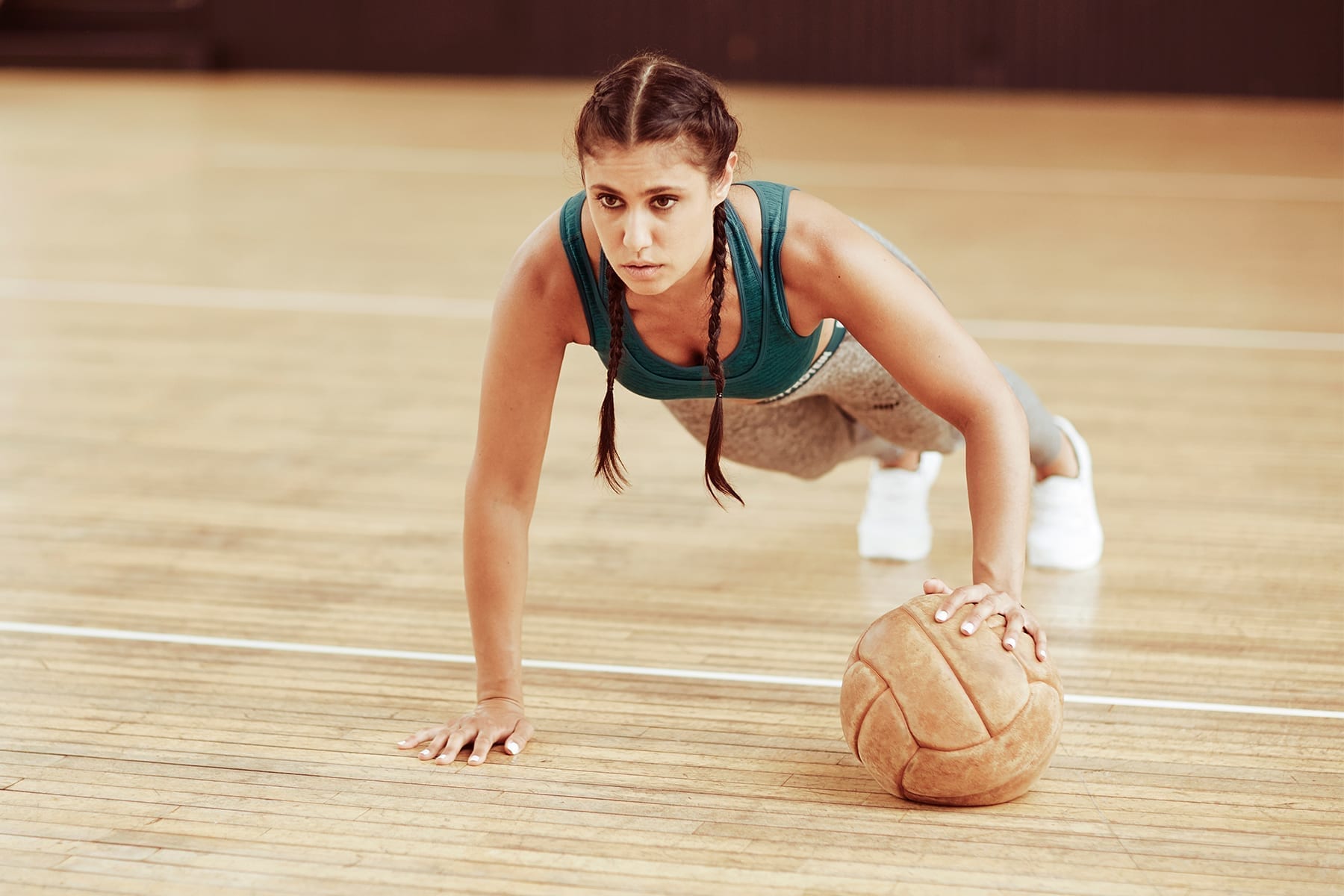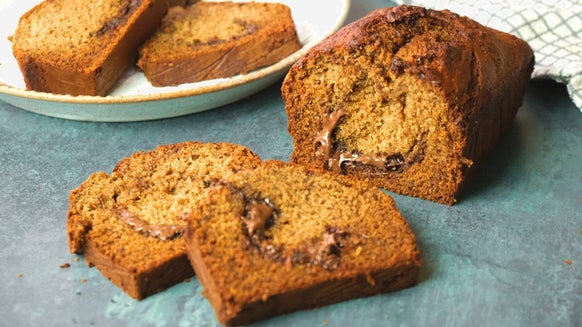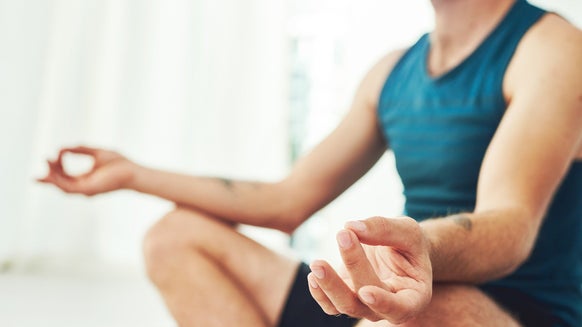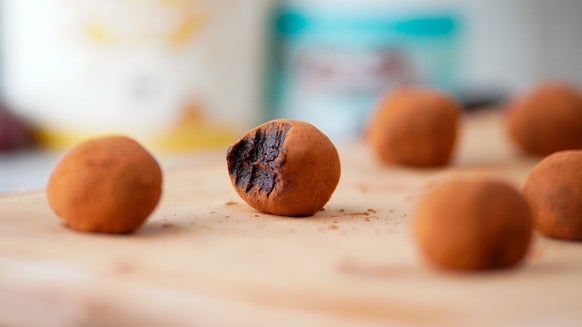How To Do A Push Up | Form, Technique & Weights

Push-ups are the bread and butter of workouts. They can be done almost anywhere without equipment and are fundamental in building your core and upper body strength.
As simple as they are, there is still room for error with push-ups and you want to make sure you’re performing them as they ought to be done.
When doing push-ups you are working your pecs, delts, triceps, abs and lats. By not doing a proper push-up, cheating or working under the guidance of improper technique you may not see the results that you’re looking for.
Our press-up form tips
You might be able to churn out endless amounts of press-ups — but how do you know you're doing the exercise correctly? Here are some top tips to ensure your form is correct.
1. Quality over Quantity
It might feel impressive to all watching when you simply drop and push out high reps but if you are serious about your training, quality is definitely more important to quantity. Get your form working to see better results.
2. Hand position
Place your hands shoulder-width apart with arms straight and so your shoulders, elbows and wrists line up. This position, with all the joints of your arms aligned, works your muscles without placing further stress on the joints.
3. Keep your elbows in
Begin the move by bending your elbows to lower your chest towards the ground. If you flare your elbows, you’re putting stress on your joints that can be avoided. Keep your elbows tucked in throughout.
4. Keep it neutral
Keep your body straight through the movement. This is healthy for your spine and posture while working all muscles in the body to keep the body straight and strong
The perfect push-up
When doing push-ups you are working your pecs, delts, triceps, abs and lats. By not doing a proper push-up, cheating or working under the guidance of improper technique you may not see the results that you’re looking for.
- To begin, though you may think of push-ups as requiring only your arms to put in a shift, you need to engage your core muscles to perform a plank. Keep your back and legs straight (except when altering your inclination for an alternative push-up).
- Your feet should be slightly parted to spread your weight across your lower abs. Clench your glutes. Your hands should be a little more than shoulder-width apart. Look straight ahead of you (not down), so that your head is back.
- Keep your elbows close to your torso as you push. At the top of the push-up, your arms should be straight. At the bottom, when your elbows are bent, your chest should just about touch the floor. To make sure you don’t cheat, use a mirror and also place something just under the size of a fist between the floor and your chest so that you don’t cut corners or go faster to rush through the motion.
The benefits of press-ups
One of the big pluses about push-ups is that they are so simple and you can perform them with very limited space. So how can you make them work for you without adding extra reps or weight?
The closer together your hands are on the floor, the more your triceps will come into play. The wider apart your arms are, the more you will reply on your chest and muscles in your back to bear the brunt of the pressure. By arching your back so that you descend into the press at varying angles you’ll be able to build your traps and shoulders.
With that in mind, you can tailor your sets to suit the muscles you want to isolate. Obviously, the steeper the angle, the less evenly your weight will be spread over your torso, meaning your arms, back and chest will bear the brunt.
The Best Push-Up Variations
1. Decline Push-Up
With the decline press-up, your feet are elevated so that your body is at an angle to the floor rather than parallel. This works the upper chest and front shoulders more than the regular push-up.
- Lie on an exercise mat in the press-up position with your object positioned behind you.
- Plant your toes on the surface behind you and take up a straight body as you would a normal press-up with a straight body and tensed core.
- With your hands shoulder-width apart, elbows tucked in, release towards the floor slow and controlled.
2. Incline Push Up
This simple movement targets the main muscles of the chest, the pectoralis major and minor. In addition to exercising the chest, the incline Press-up engages the shoulders (deltoid), arms (triceps) as well a long list of muscles throughout the abs, back, hips, and legs that act as stabilizers and prevent any sagging or arching of the spinal column during the movement.
Lie on an exercise mat in the press-up position with your object positioned in front of you. - Plant your palms on the surface in front of you and take up a straight body as you would a normal press-up with a straight body and tensed core.
With your hands shoulder-width apart, elbows tucked in, release towards the floor slow and controlled.
3. Wide Grip Press Up
Wide press-ups are a simple yet effective way to build your upper-body, core strength and target your shoulders slightly. If you’ve perfected the regular press-ups and want to target your muscles a little differently, these are for you. Positioning your hands further apart targets your chest and shoulder muscles.
When in the press-up position, tense the core and ensure the body is straight. Arms set wider than the shoulders and hands facing out to maintain comfort. Release towards the floor slowly and controlled before pushing back to the start position.
4. Kitchen Sieve Close-Grip Press-Up
Picture the Diamond Press-Up. Now take this and slightly elevate the movement. This slightly changes the angle of the chest muscles worked and will isolate the Triceps even more so.
Take a diamond press-up position on the sieve while keeping your body straight and core engaged. - Keep your elbows tucked in.
Lower to the Sieve before pushing back to the start.
5. Wall Push Up
The perfect push up for someone just beginning and is yet to try the exercise. You can fulfil the push-up motion with the least effort required. A great way to perfect the technique.
- Begin in the same position as you would with a standard press up.
- Bend your elbow and begin to lean your body toward the wall as far as you can go.
Ensure that your back stays straight and your hips don't dip. Even out your bodyweight and keep the body and core engaged. Push back to the starting position and complete as many reps as possible.
6. Adding Weight To Push-Ups
As with the majority of resistance workouts, advancement means increasing the number of reps you do or the amount of weight you lift. At a glance, you may not think this applies to push-ups, which are a favourite for the lack of need for equipment and depending solely on your bodyweight. But when it is an option to do so, performing the same push-ups with extra weight on your back will, of course, add to the resistance of the targeted muscles.
Your Questions Answered — Push Up FAQs
1.Which Muscles do push-ups work?
When this is done correctly, this compound exercise will work the chest, shoulders, triceps, back, core and the legs as working and supporting muscles.
2. How many push-ups should I do each day?
There are so many varying sets and repetitions you can follow with this, however, I would recommend challenging yourself by completing 4 sets to failure. You can set yourself a new target as you get stronger and increase your numbers.
Take Home Message
Push-ups are one of the fundamental exercises in resistance training and can be done absolutely anywhere so adding this to your routine is highly recommended. With its adaptability that suits everyone from beginners to advanced trainers, you can’t go wrong with using this exercise regularly.




